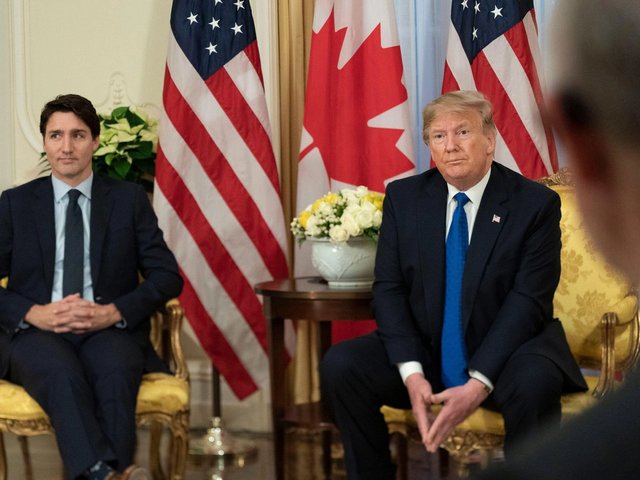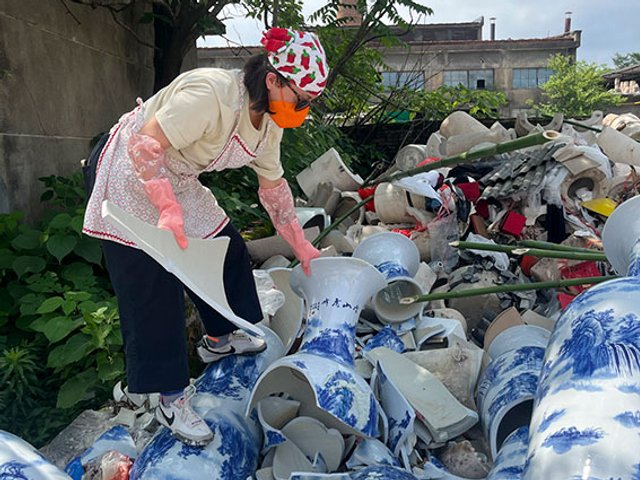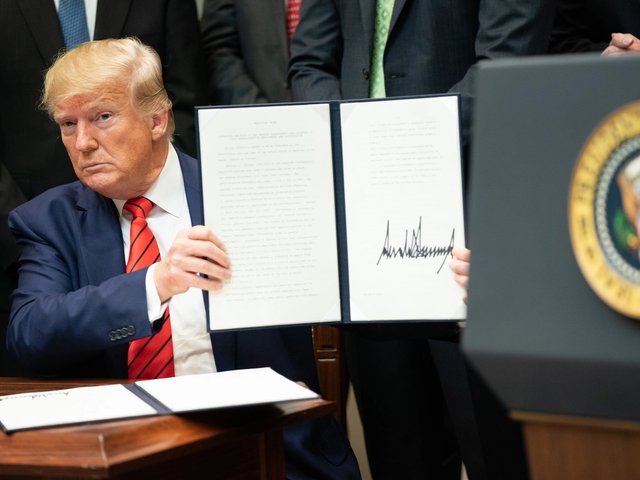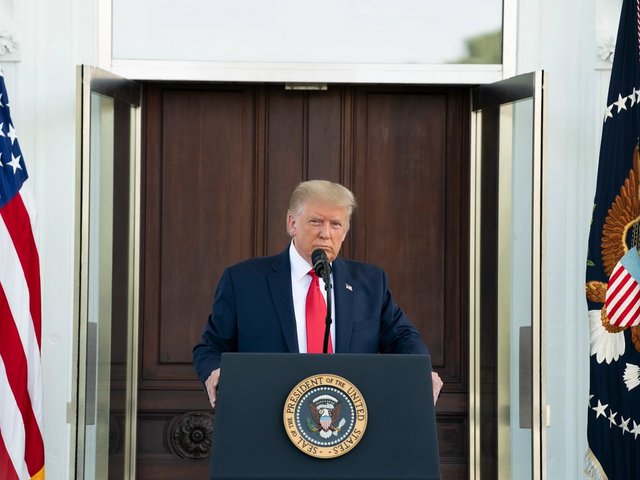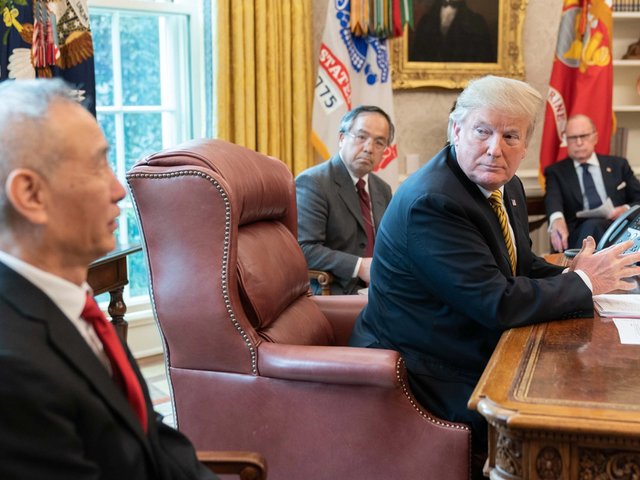US President Donald Trump’s 90-day pause on his international tariff regime, intended to give individual nations time to negotiate bespoke trade deals with the US that might lessen or eliminate the duties, appears only to be making art collectors and dealers less confident about what they could be doing during this period and beyond. Should buyers and sellers act quickly before tariffs may be reimposed? Should they hope that trade talks will eliminate tariffs completely? Will they know in early July whether art is exempted from any new tariffs?
“I do not expect that the market will heat up in the next 90 days,” Pierre Valentin, a former in-house legal counsel at Sotheby’s and currently the joint head of the art law group at Fieldfisher London, said shortly after Trump’s reversal in early April. “In fact, I expect buyers and sellers not to commit until this turbulent period is over. If that’s right, the spring sales will suffer and the auction houses will struggle to get property for sale in the second half of this year. The fairs taking place in May and June could also be negatively affected.”
Lawyers in the US have been kept busy fielding calls from and advising clients on what is known so far and what might be expected. Nicholas M. O’Donnell, a partner in the law firm Sullivan & Worcester in Boston, says he has “heard from US collectors, dealers and auction houses. Likewise, foreign dealers and auctioneers.” On their behalf he has contacted the US Customs and Border Protection (CBP), seeking “binding rulings and/or declaring something exempt to see what CBP’s response is”.
Erika Bochereau, secretary general of the 5,000-member, Brussels-based art dealers’ association CINOA (Confédération Internationale des Négociants en Œuvres d’Art), says that in order to “help provide clearer guidance to our members, we’ve actually consulted a US lawyer and are sharing some preliminary insights, though much remains unsettled”.
Dealers and gallery owners in Europe are at a loss as to how they should respond. Patrick Mestdagh, the founder of the Brussels-based Galerie Patrick Mestdagh, says he is relying on CINOA for information and recommendations that it receives from lawyers and fine art shippers. “A significant number of art market players do not understand the policy pursued by the President of the United States,” he says. “The stupefaction is greater than the anger.”
Clinton Howell, an antiques dealer in New York and the president of CINOA, said in early April that the organisers of “all the major shows had a conference call the other day to try and come to grips about what is happening”, since many dealers participating in upcoming fairs are anxious about the tariffs.
It is not just the dealers of antiques, fine and decorative art who are unsettled. The Zurich-based auction house Nomos postponed an April sale of rare coins to mid-June in hopes that the delay will allow for “clarifications” from “the numismatic trade’s legal advisors”, according to a statement released by the company. Mike Gasvoda, the managing director of the Classical Numismatic Group, an international organisation that publishes auction catalogues and sells coins from various periods and regions, wrote to his members: “One thing is certain at the moment: if coins are sent from the US to other countries, they are subject to US tariffs if they are returned or sold back into the US.”
Much remains unknown. The US federal government’s Harmonized Tariff Schedule, which determines tariff classifications for goods entering the US, exempts what are called “informational materials”, which include works of art, as well as publications, photographs, films, posters and a slew of other media. “Informational materials” does not specifically include decorative arts, non-sculptural antiquities and ethnographic objects, numismatics and general antiques. Collectors, dealers, auctioneers and their lawyers are all seeking clarity on this.
The lawyers themselves do not have answers, which only adds to the frustration. “The big question now is the definition of ‘artworks’, and this desperately needs to be clarified,” says Michael McCullough, a partner in the Manhattan law firm Pearlstein & McCullough. He notes that, unlike automobiles, most of which either are imported or contain imported parts and are essential to most people’s lives, “art is a highly discretionary purchase and of no great necessity”, adding that “art is easily stored in a bonded warehouse, so you can wait out the tariffs”.
North American realignment
Perhaps a preview of what could take place in the international art market can be gleaned from the US’s neighbours to the north and south. The 25% tariffs imposed on 4 March by the Trump administration apply to most goods coming into the US from Canada, which responded with its own 25% tariffs on items imported from the US. Canadian “collectors have paused their acquisitions” of art produced in the US, says Mia Nielsen, the director of Art Toronto, Canada’s biggest art fair. “A 25% tax represents a big price increase.” Some Canadian collectors are waiting for the expected trade negotiations, she says, while others “are cancelling purchases altogether”.
Art Toronto typically organises travel for a group of 15 to 20 Canadian collectors to visit Chicago for the Expo Chicago fair in April. But after ten people cancelled their participation in this VIP programme—which involves visiting Expo Chicago, tours of museums and galleries, studio visits with artists and private receptions—as a result of their irritation with the US tariffs, “we had to cancel”, Nielsen says. “It was no longer viable for us.”
The organisers of Art Toronto also hold a second art fair in the city, Artist Project (8-11 May), which provides an opportunity for less established artists in Canada and the US to display their work. Nielsen says that five US artists dropped out of the event in the span of one week in April, which she attributed to the reluctance of Canadian collectors to pay a 25% tariff on their work. “It’s terrible,” she says, “because a lot of artists rely on this show for their livelihood.”
Toronto’s biggest art museum, the Art Gallery of Ontario, recently purchased several works by a US artist right before the tariffs took effect. “I dashed them across the border to be on the safe side,” says Stephan Jost, the gallery’s director. Going forward, he says, “we will focus more on Canadian artists. Recently we brought our board of trustees to Mexico City because we want to strengthen cultural relationships between Canada and Mexico.”
In Mexico, which was also hit with 25% tariffs back in March, the situation has produced more confusion than outright anger. “As far as we understand tariffs are not affecting artworks, but the information is constantly changing and somewhat confusing and it affects mostly the shipping of artworks made of materials affected by tariffs,” says Issa M. Benitez, the owner of the Proyecto Paralelo gallery in Mexico City and a member of Galerias de Arte Mexicanas Asociadas, the Mexican art gallery association.
She adds: “As far as fairs go no one has yet cancelled any participation in previously committed engagements, but we do have a sense of caution for upcoming projects, fairs and events. Everyone is at a standstill because it is difficult to make informed decisions when the news cycle moves so fast and is so unpredictable.”



